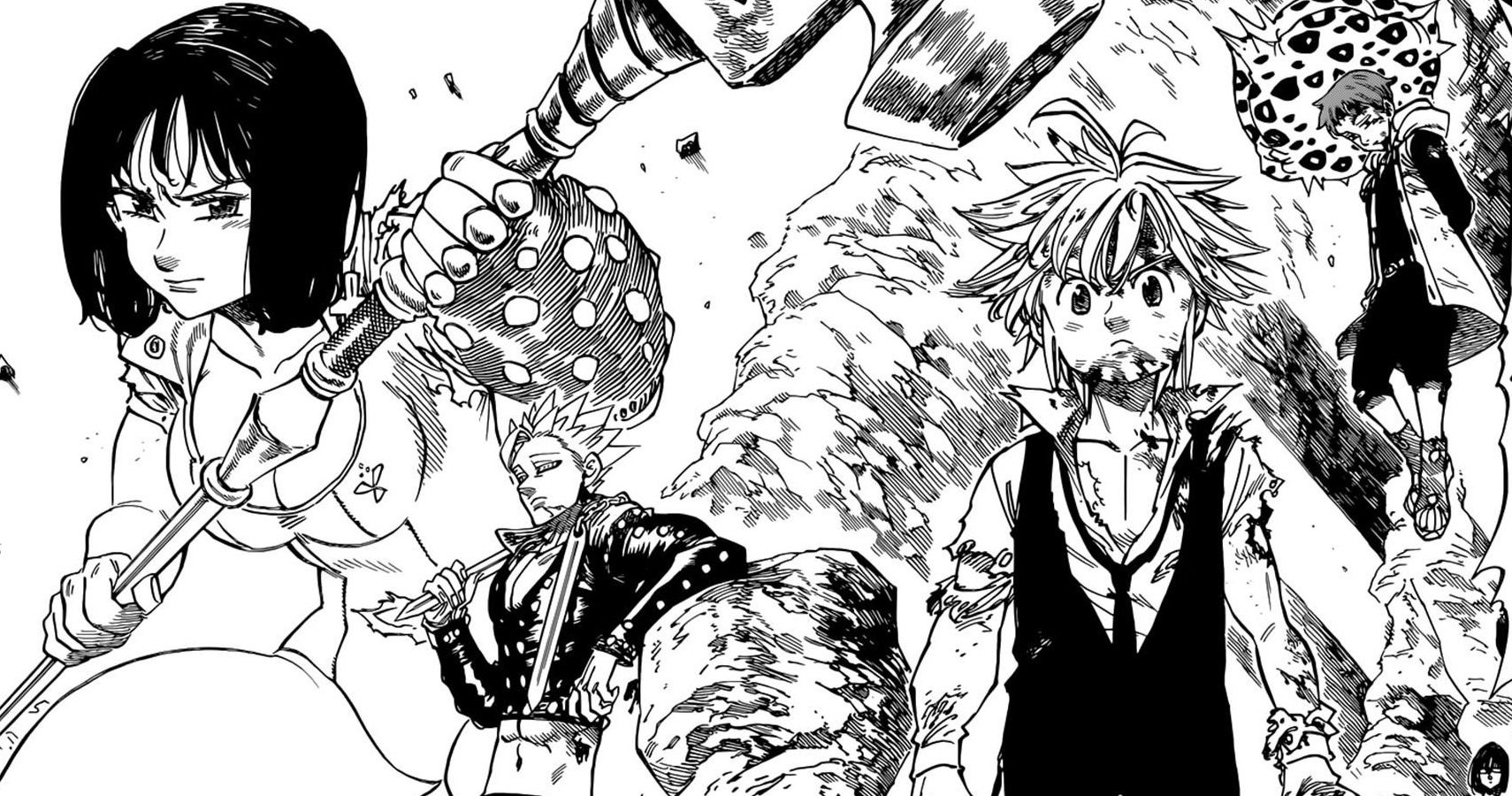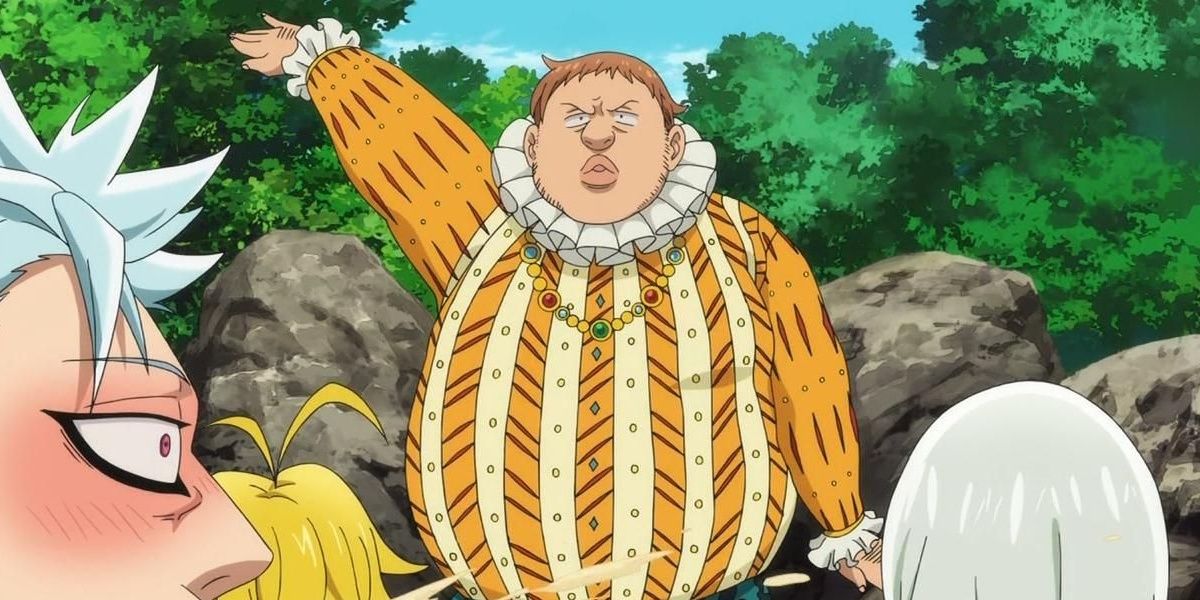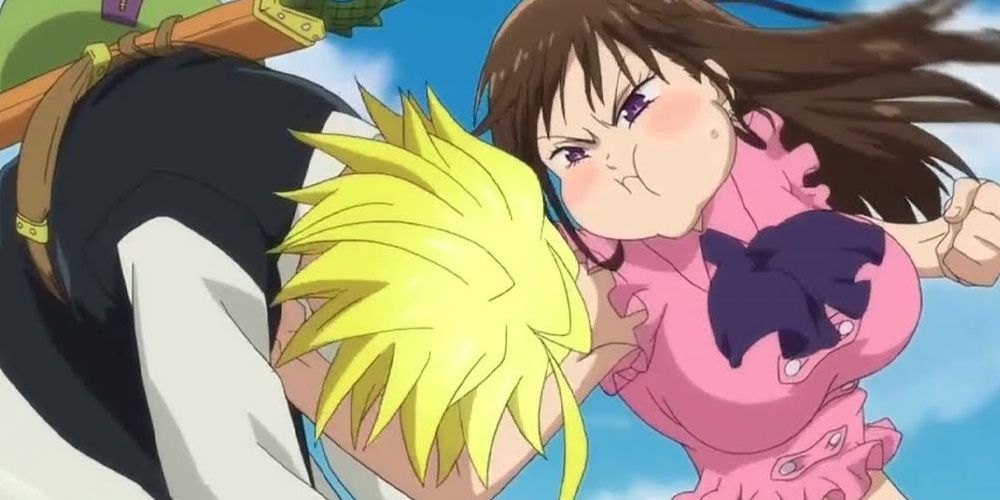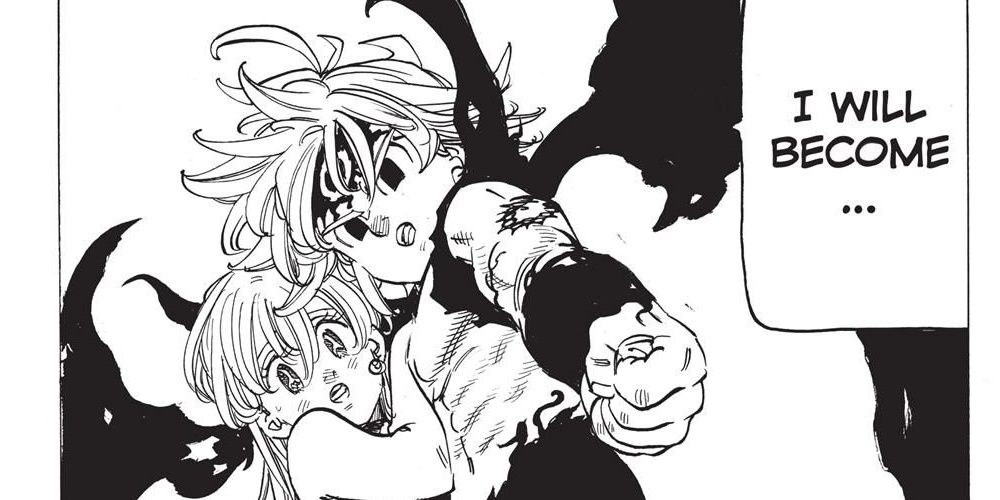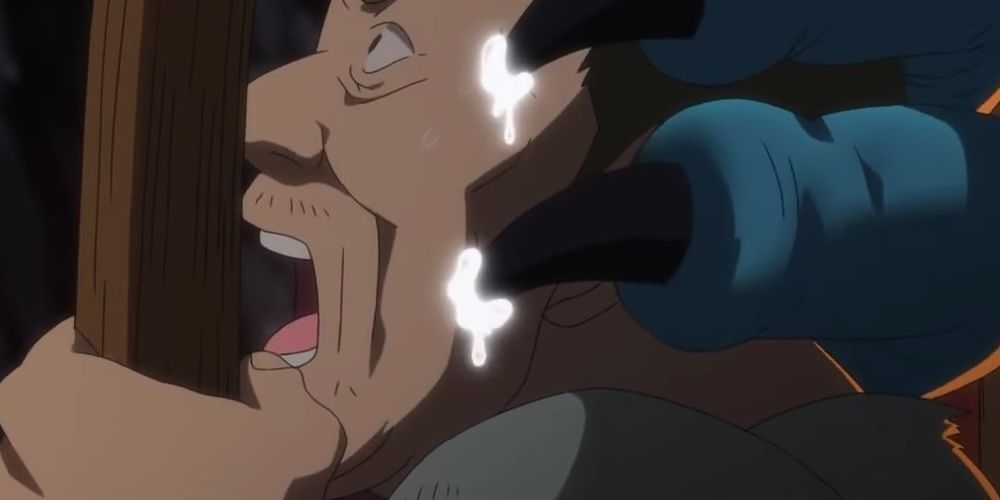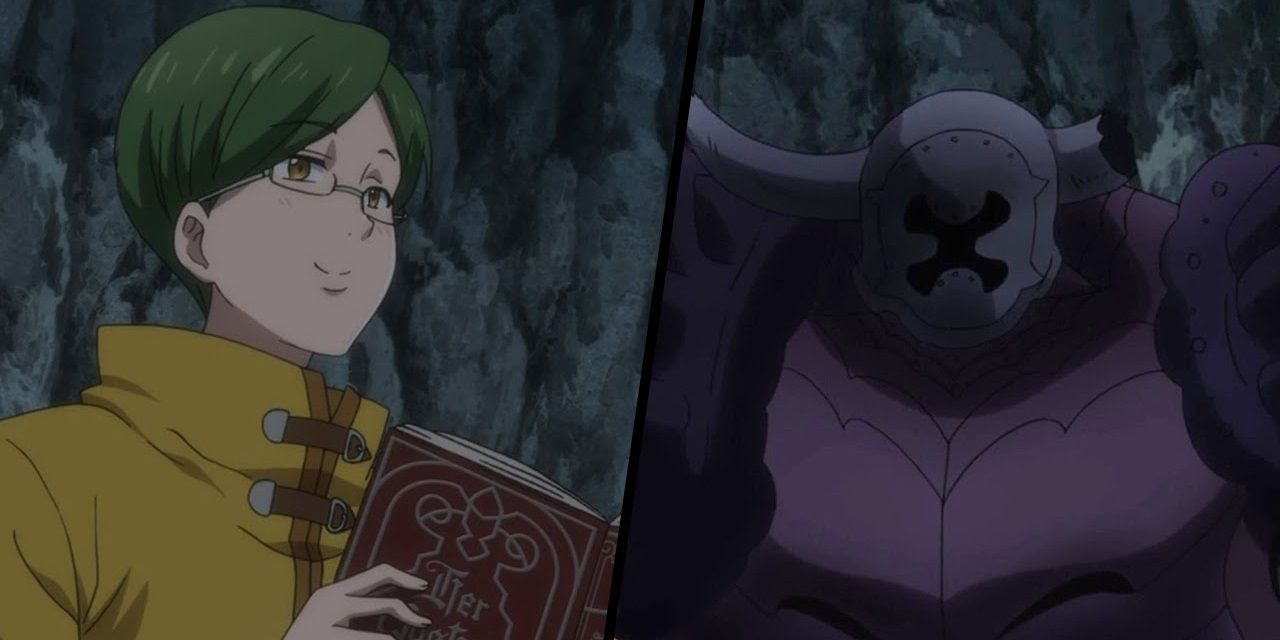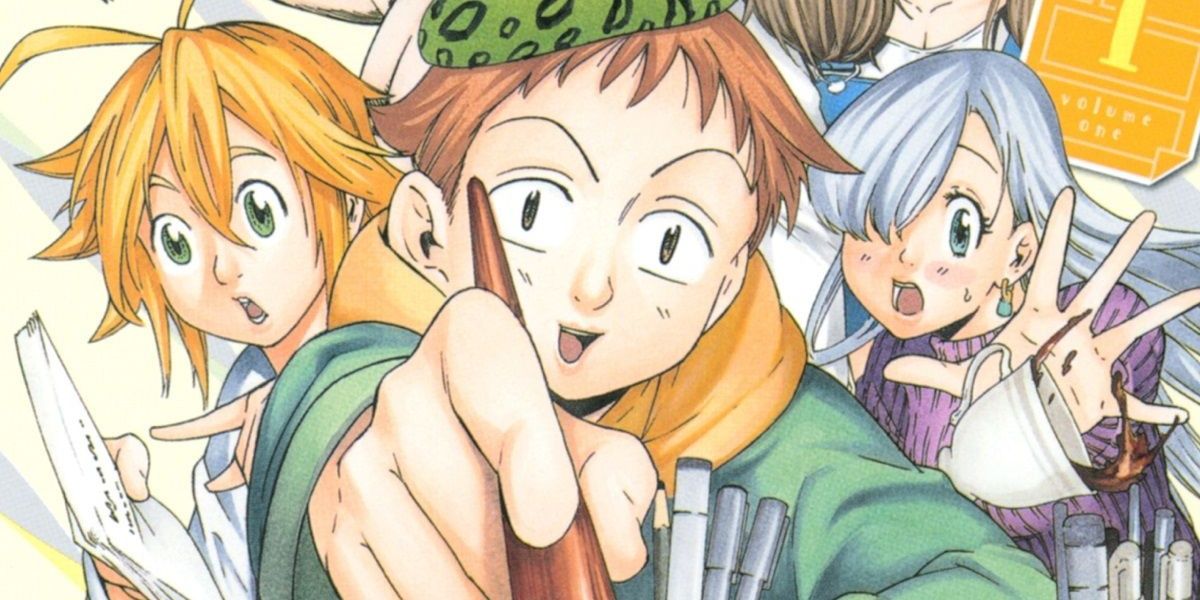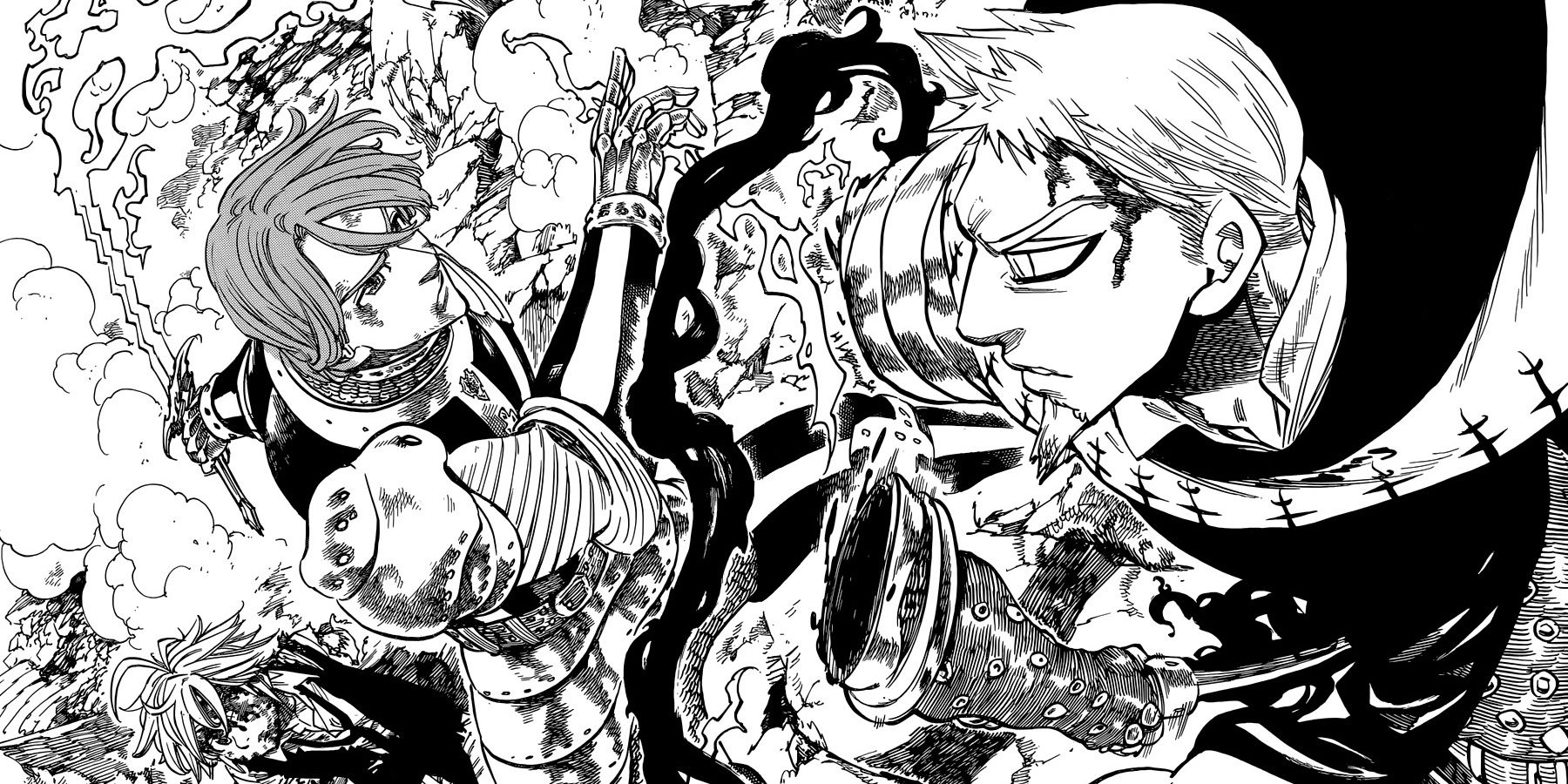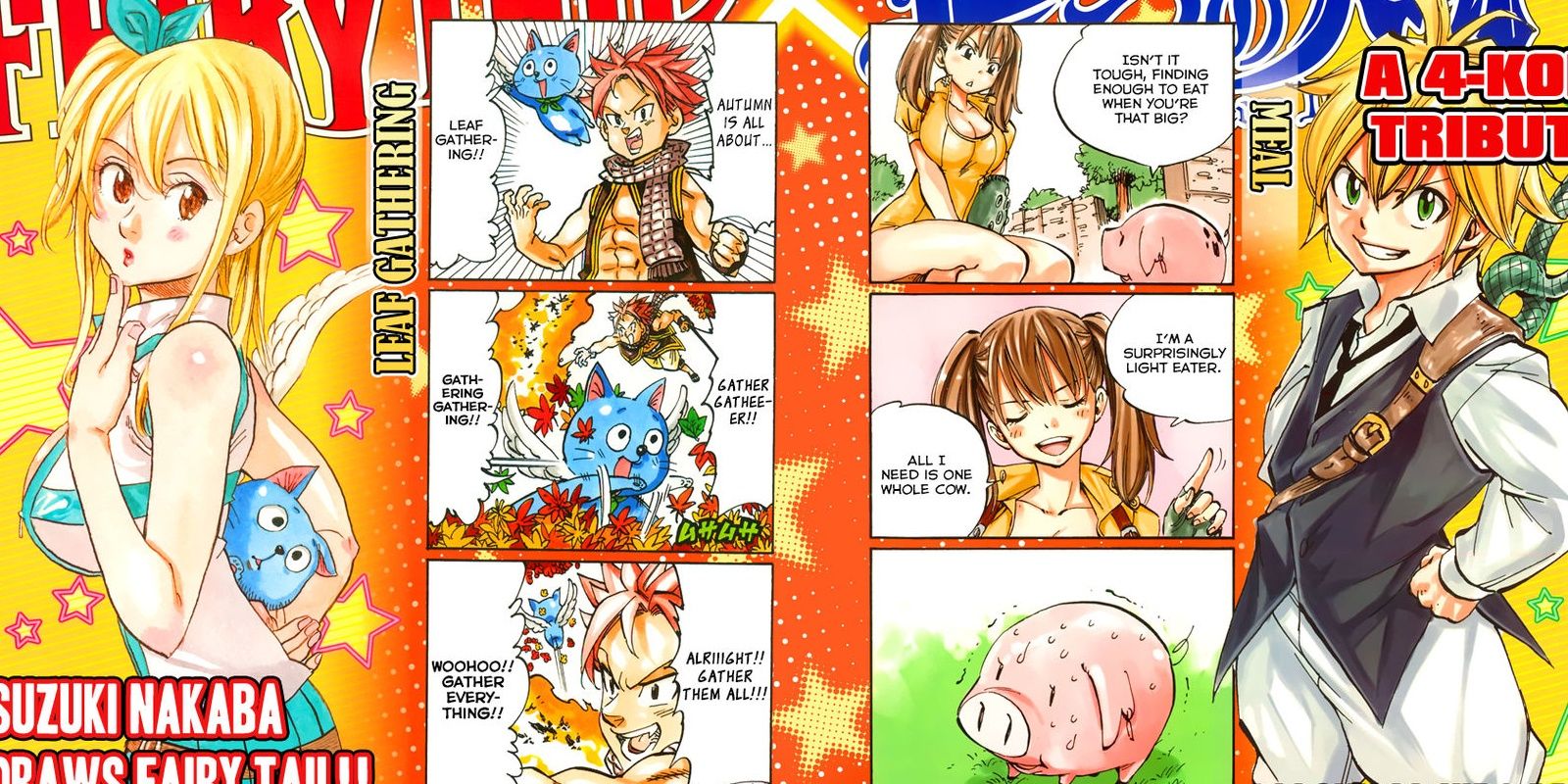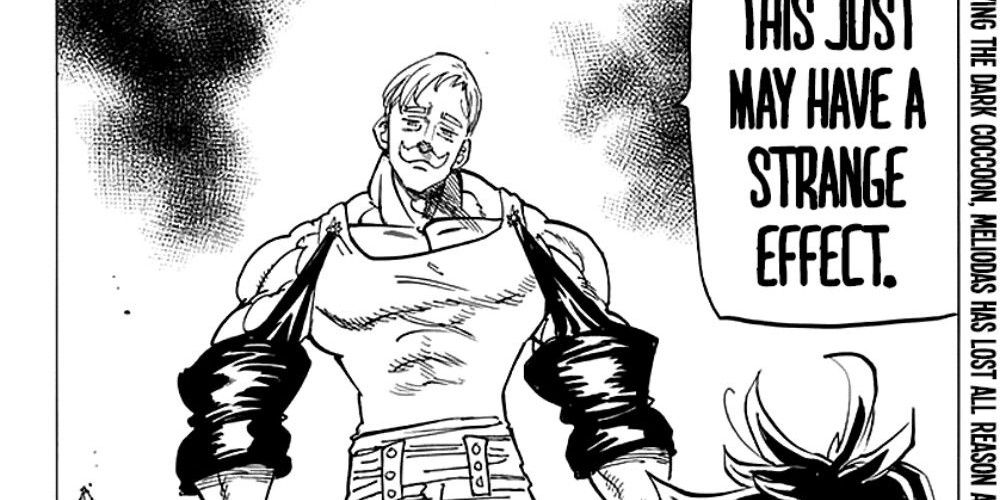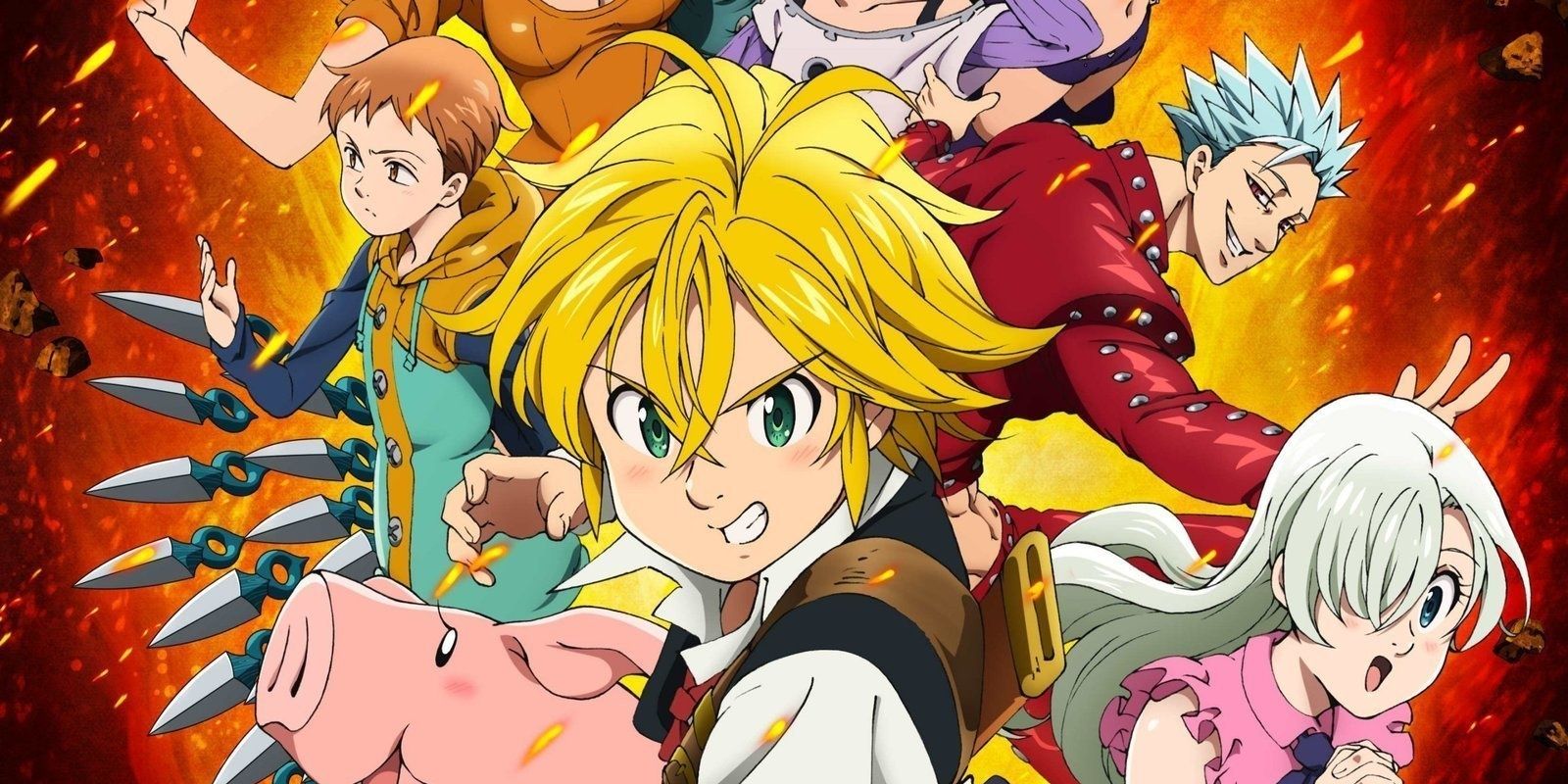Anime versus mangaーit's a debate that's raged across multiple fandoms in the anime and manga community for a very long time. A lot of anime can be different from their manga counterparts when they're adapted which tends to spark these arguments over which one is better. This even includes the shonen fantasy series, The Seven Deadly Sins.
For the most part, Seven Deadly Sins is a one-to-one anime adaptation of its manga about the "Seven Deadly Sins", a group of powerful misfit knights defending their kingdom from evil, but there are a few differences between the two and other things that only fans of the manga would know about.
10 King's Human Form
Fans of Seven Deadly Sins know that King has two forms, one being his normal small fairy form and the other being a more overweight human form. Originally this was out of social awkwardness and considered his "formal" appearance, but he would also sometimes change into this form when he was stressed.
In the anime, King's human form mostly took a backseat after his return to the Sins, only coming out on rare occasions, but in the manga, they made a little more use of it is mostly comedic situations.
9 A Bit More Humor
Seven Deadly Sins focus is mostly on the action, but like most other battle shonen, it has quite a bit of humor thrown in too. What readers of the manga know, is that there was a lot more banter between the Sins that ended up being cut from the anime.
For example, in the scene where Gowther runs after seeing his "heart" again, Meliodas and the others make a bet on who could catch him first. It's moments like this that really give personality and fun to the Sins' relationship to each other as a group and it's a bit sad that some of these moments were omitted from the anime.
8 Demons & Goddesses Don't Mix
Obviously, it's easy to see why the Demon Race and the Goddess Race are at war with one another, the two are literally "light" and "darkness". However, the manga also adds a few small hints that demons and goddesses just being around each other has some side effects as well.
This is most notable during the flashback arc when Elizabeth is facing the Commandments and Meliodas hangs back. Meliodas states that being a demon, he would only interfere with her abilities. This implication is interesting, but never really explored, which is probably why it wasn't even mentioned in the anime.
7 No Censorship Issues
Seven Deadly Sins is a series with a pretty high amount of violence in it and has lots of blood, death, and severed body parts to prove it. This stayed consistent for the anime in its first two seasons, but after the anime switched studios for the third season, the violence began to be censored (most notably being "white blood").
The censorship wasn't even fully consistent in the season, which made things a little worse. Manga readers never had to experience this problem, since the manga stuck with its violent and brutal moments from start to finish.
6 Gowther/Pelliot's Introduction
Probably the most notable difference between the Seven Deadly Sins anime and manga was the way that the "Goat Sin of Lust", Gowther was introduced. In the anime, disguised as "Alan", Gowther is first seen taking care of a mutated knight before he reveals himself to the other Sins, but there was a bit more to it in the manga. In the manga, disguised as "Armando" Gowther first premieres alongside the side character of Pelliot and his pretend Seven Deadly Sins.
Gowther's reveal was more of a shock in the anime, as he put up more of a convincing act as Armando, and while Pelliot would make a similar first appearance as he bugged Gowther in the anime, it was only after the battle for Liones, making it somewhat of a reduced role compared to the manga.
5 All The Spin-Offs
While some go into backstories and other little details about the main plot, others go really out-there with alternate universes depicting the cast in various different ways most wouldn't have imagined.
There are spin-offs such as one where the Sins are high school students, one where they're actors for their own show, and there's even one about King being an aspiring manga creator.
4 Visuals That Hold Up
Another unfortunate side effect of Seven Deadly Sins' switch to Studio Deen was a decline in the animation's quality. The third season of this anime looks stiffer, sloppier, and fight scenes lack punch compared to the seasons under A-1 Pictures. Another problem that manga readers did not have to suffer with.
The artwork for Seven Deadly Sins stayed consistently eye-catching throughout it's run, some would even argue that the battles in the manga are actually more visually striking in some panels compared to how they were portrayed in the anime even before the studio change.
3 They Had A Crossover With Fairy Tail
Crossovers between anime/manga series' aren't exactly a common thing, but they can be something incredible. The Seven Deadly Sins manga began a short manga tribute and a Christmas special crossover with another popular fantasy battle shonen, Fairy Tail.
The special's story's a pretty simple one-two punch, with Meliodas and Elizabeth visiting Magnolia and Meliodas tries to buy a Christmas gift for Elizabeth, meanwhile Natsu and Happy have a strange run-in on a rooftop. While it's mostly light fun, it was cool to see these worlds interact and what's even more interesting is that fans got to see them switch art styles, with the Sins' story drawn by Hiro Mashima while Natsu's was drawn by Nakaba Suzuki.
2 Structure
Sometimes it's hard to adapt pieces of a story into a more tv style format. While Seven Deadly Sins managed to adapt its story in a near-exact translation of the manga, fans noted that the structure of the story was thrown off in how it was adapted.
There are moments and reveals that was adapted for the anime that seem more rushed out and lacked impact compared to its manga counterpart, there was even an entire small story arc that got skipped in the anime. The structure of Seven Deadly Sins' manga chapters seem to have the right structure and pacing for its story.
1 The Ending
With three seasons under its belt, a few OVA episodes in between, and another season on the way, fans will have to wait a bit before they can see Seven Deadly Sins come to a close. However, for manga readers, the series has been over for quite some time.
While it's not always about the destination, but the journey, manga readers of this series already know what's coming by the time the fourth season is dropped on Netflix and as such, have a broader understanding of the story as a whole as opposed to those who only watched the anime. Whether that ending can be considered "good" might be up to interpretation, but viewers and readers will just have to see for themselves how the two versions compare once the story in the anime reaches the end.

